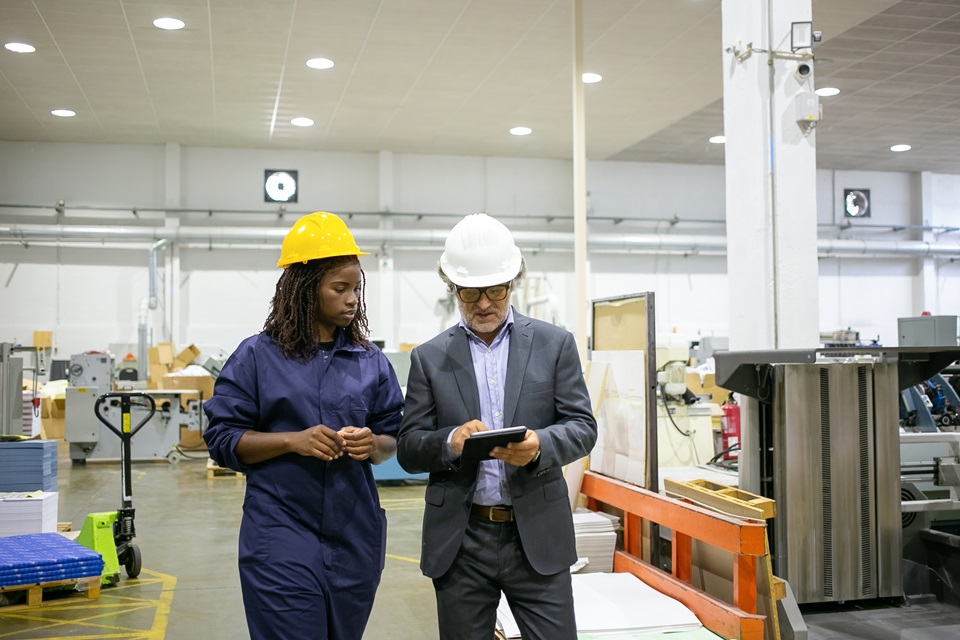In the fast-paced world of manufacturing, efficiency isn’t just a goal; it’s a necessity. With competition fiercer than ever and consumer demands evolving rapidly, manufacturing facilities must operate at maximum efficiency to stay ahead. Achieving peak efficiency requires a combination of streamlined processes, advanced technology, and optimized workflows.
In this blog post, we’ll explore the essential components that drive efficiency in manufacturing facilities.
Table of Contents
Advanced Machinery & Equipment
At the core of every manufacturing facility lies its machinery and equipment, serving as its fundamental backbone. It is imperative to invest in cutting-edge machines that exhibit reliability, versatility, and efficiency. Modern manufacturing heavily leans on automation, employing a variety of tools from CNC machines to robotic arms.
This automation not only enhances productivity but also curbs downtime. Consistent maintenance and timely upgrades play a pivotal role in preserving these vital components, ensuring they function optimally and minimizing any interruptions to production.
For instance, a crane rental company plays a crucial role in providing essential lifting equipment that aids in various manufacturing processes, facilitating smooth operations and efficient material handling.
Lean Manufacturing Principles
Lean manufacturing principles focus on eliminating waste and optimizing processes to maximize efficiency. Techniques such as value stream mapping, 5S methodology, and Just-In-Time (JIT) inventory management help streamline workflows and reduce unnecessary steps in production.
By continuously evaluating and refining processes, manufacturing facilities can identify areas for improvement and implement changes that enhance efficiency.
Effective Supply Chain Management
A well-managed supply chain is essential for maintaining efficient operations in manufacturing facilities. This includes sourcing high-quality raw materials, negotiating favorable contracts with suppliers, and optimizing inventory levels to prevent shortages or excess stock.
Collaborating closely with suppliers and implementing real-time monitoring systems can help identify potential disruptions early on, allowing for swift resolution and uninterrupted production.
Employee Training & Engagement
Employees are the driving force behind every successful manufacturing facility. Providing comprehensive training programs ensures that staff members are equipped with the knowledge and skills needed to perform their roles efficiently.
Additionally, fostering a culture of continuous improvement and empowering employees to contribute ideas for optimization can lead to innovative solutions and increased productivity on the factory floor.
Data Analytics & Performance Metrics
Leveraging data analytics and performance metrics provides valuable insights into the efficiency of manufacturing processes. By tracking key performance indicators (KPIs) such as cycle time, throughput, and defect rates, facilities can identify trends, pinpoint areas of inefficiency, and make data-driven decisions to optimize operations.
Implementing advanced analytics tools and predictive maintenance systems can further enhance efficiency by proactively addressing potential issues before they escalate.
Quality Control & Assurance
Maintaining high standards of quality is essential for customer satisfaction and long-term success in manufacturing. Implementing robust quality control measures at every stage of the production process helps identify defects early on, preventing costly rework or recalls down the line.
By investing in advanced inspection technologies and rigorous testing protocols, manufacturing facilities can ensure that only products that meet or exceed specifications are released to the market.
Energy Efficiency & Sustainability
Embracing energy-efficient practices not only reduces operational costs but also minimizes environmental impact. Implementing measures such as energy-efficient lighting, HVAC systems, and machinery can significantly lower energy consumption and carbon emissions.
Additionally, incorporating sustainable materials and processes into production reduces waste and enhances the overall eco-friendliness of the manufacturing facility.
Continuous Improvement Culture
Continuous improvement is not a one-time effort but a mindset that should be ingrained in the culture of a manufacturing facility. Encouraging feedback from employees, soliciting suggestions for process improvements, and regularly reviewing performance metrics are all essential components of a continuous improvement culture.
By fostering an environment where innovation is embraced and change is seen as an opportunity for growth, manufacturing facilities can adapt quickly to evolving market demands and maintain a competitive edge.
In Conclusion
Efficiency in manufacturing facilities is achieved through a combination of advanced technology, streamlined processes, and a commitment to continuous improvement. By investing in essential components such as advanced machinery, lean manufacturing principles, effective supply chain management, and employee training, facilities can optimize operations and drive sustainable growth.
Embracing data analytics, quality control measures, energy efficiency, and a culture of continuous improvement further enhances efficiency and ensures long-term success in today’s competitive manufacturing landscape.



